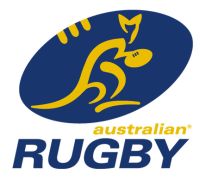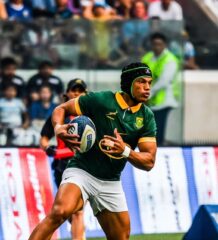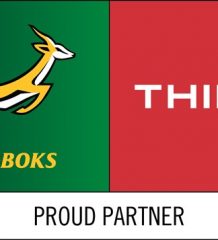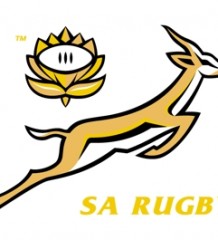ARU releases 2016 Annual Report at AGM, reporting surplus and participation growth
The Australian Rugby Union (ARU) today announced its 2016 results at the ARU Annual General Meeting, held in Sydney.
In 2016, the ARU began implementing the 2016-2020 Strategic Plan, which was released in April and provides a framework for Australian Rugby to achieve its vision: “To inspire all Australians to enjoy our great global game”.
The 2016-2020 Strategic Plan aligns with the 2016-2020 broadcast deal, which delivered a 148% revenue increase over the previous arrangement and consequently allowed strategic investment to increase in 2016.
The ARU reported a surplus of $3.7m in 2016 ($9.9m deficit in 2015), after accounting for a $4.8m investment in the Western Force alliance agreement – a necessary investment to secure the short-term financial viability of the team and ensure ARU’s commitments to SANZAAR and broadcasters continued to be fulfilled.
The ARU’s financial position was bolstered through the significantly improved broadcast deal worth $285m over 2016-2020, an 18% growth in sponsorship income, and the financial success of the sold-out HSBC Sydney7s and the England Series in June.
With the improved broadcast arrangement, the ARU invested in strategic priorities including Community Rugby (expenditure grew by $4.1m), Wallabies (expenditure grew by $2.8m) and Sevens (expenditure grew by $1.2m). Super Rugby expenditure increased by $13.8m, which includes the $4.8m to the Western Force alliance agreement (which was not forecasted in the original 2016 budgets).
While it was encouraging to report a surplus, the target surplus of $8.0m was not achieved which will have implications for future investment. Knowing that a significant deficit is likely to be recorded in 2019 due to the World Cup (due to the reduced domestic Test schedule), it is important that the business prepares for this. In 2017, this will involve sensible budget management and focus on growing revenue through strategic growth initiatives and maximise available technologies that streamline the operations of the ARU and Member Unions.
Significant highlights from the year include:
- The success of the Qantas Australian Women’s Sevens team at the Rio de Janeiro Olympic Games, where they claimed the first ever gold medal for rugby sevens, three months after winning their maiden World Series title.
- Participation grew significantly in strategic programs including Game On (Australian Rugby’s five-week rugby program for primary schools) and Foxtel VIVA7s.
- New concussion, safety and inclusion initiatives were developed and introduced to maximise the wellbeing of all rugby participants.
- In landmark Olympic year, Sevens participation grew by 37% (33% female increase; 39% male increase).
- Women’s participation grew by 33% in Sevens and 24% in Club XVs.
- Deadly7s – Australian Rugby’s five-week Indigenous school’s rugby program – was delivered to 2,462 primary school students (significantly surpassing the target of 400 students).
- Rugby.com.au was relaunched and gained an extra 16,000 users per day.
- The inaugural Sydney7s was an outstanding success in terms of fan engagement, team performances and commercial revenue. More than 50% of ticket buyers and 85% of corporate hospitality buyers had never purchased rugby tickets before.
- Engagement in the Buildcorp NRC grew with a 10% increase in crowd attendance and 23% increase in viewership on a per match basis (or 65% increase overall).
- The Qantas Wallabies introduced 13 new debutants in 2016 – the second highest tally of the professional era – with encouraging signs in the lead up to the 2019 World Cup.
- Michael Cheika, Stephen Larkham and Mick Byrne made long-term commitments to coaching the Qantas Wallabies.
- The Qantas Australian Men’s Sevens team finished fourth in the World Series, their best result in six years.
- Sponsorship revenue grew by 18%, bolstered by new partnership agreements with Destination NSW, Foxtel, Falken Tyres, Bet365, RM Williams, Sydney Airport, and new commitments from Qantas, BMW, Buildcorp, Swisse, Dove and Seiko.
- Matchday revenue increased by $13.2m from 2015, thanks to the return of a full domestic Test calendar and the success of the Sydney7s and England Series.
- Construction commenced on the Australian Rugby Development Centre (ARDC) at Moore Park with $20 million of funding from the Federal Government and NSW Government. The ARDC will be a community hub for rugby players and fans, within a renowned sporting precinct.
>From a governance perspective, the newly formed Australian Rugby Strategy Group (including the CEOs of all Member Unions, representing all the unions, competitions and clubs across the country) collaboratively oversaw the execution of the Strategic Plan, resulting in a common alignment for the future.
As per the commitment made in September 2016, the ARU has commenced a review of the Strategic Plan based on feedback from Member Unions and key rugby stakeholders. The review will ensure that Australian Rugby’s action plans match the reality on the ground. Given the feedback from the rugby community, updates to the Strategic Plan will emphasise the strategic direction of Australian Rugby at the grassroots and community level.
ARU Chairman Cameron Clyne said: “In the first year of our Strategic Plan we set ambitious targets across our four pillars and invested strategically in key areas that will grow our game for the future.
“To ensure our Strategic Plan remains relevant we have already commenced a review of the plan to ensure it meets the needs of our constituents in the rugby community. Over the last twelve months, we have seen that our community wants more detail about the strategic direction of grassroots rugby and we are committed to sharing this information with them, once the review is complete.
“While we face challenges, 2016 showed us that there are also significant opportunities for us to grow and strengthen our game in this country. The growth in Sevens and women’s rugby, and the transitions from Game On into junior club rugby registrations, show us that Australians have an appetite for rugby. We just need to connect with them in a way that suits them.
“Finally, I must mention the incredible success of our Australian Women’s Sevens Team who inspired a nation last year with their fantastic gold medal win at the Rio Olympics, just three months after they became the first Australian team to ever win an HSBC Sevens World Series. They are fantastic role models and ambassadors for our sport, and were instrumental in driving the growth of Sevens Rugby during 2016.”
The AGM included the re-election of Mr Cameron Clyne and former Wallaby Mr Paul McLean MBE as Directors. Mr Tony Shaw was elected as President, Mr Tim Gavin was elected as Senior Vice President and Mr Jeff Miller was elected as Junior Vice President. Mr John Massey and Mrs Josephine Sukkar were re-elected as Nominations Committee members.
The Australian Rugby Union’s 2016 Annual Report is available here.
Related Posts
« Francois Pienaar children’s rugby skills clinic Beauden Barrett issued no further sanction »

















